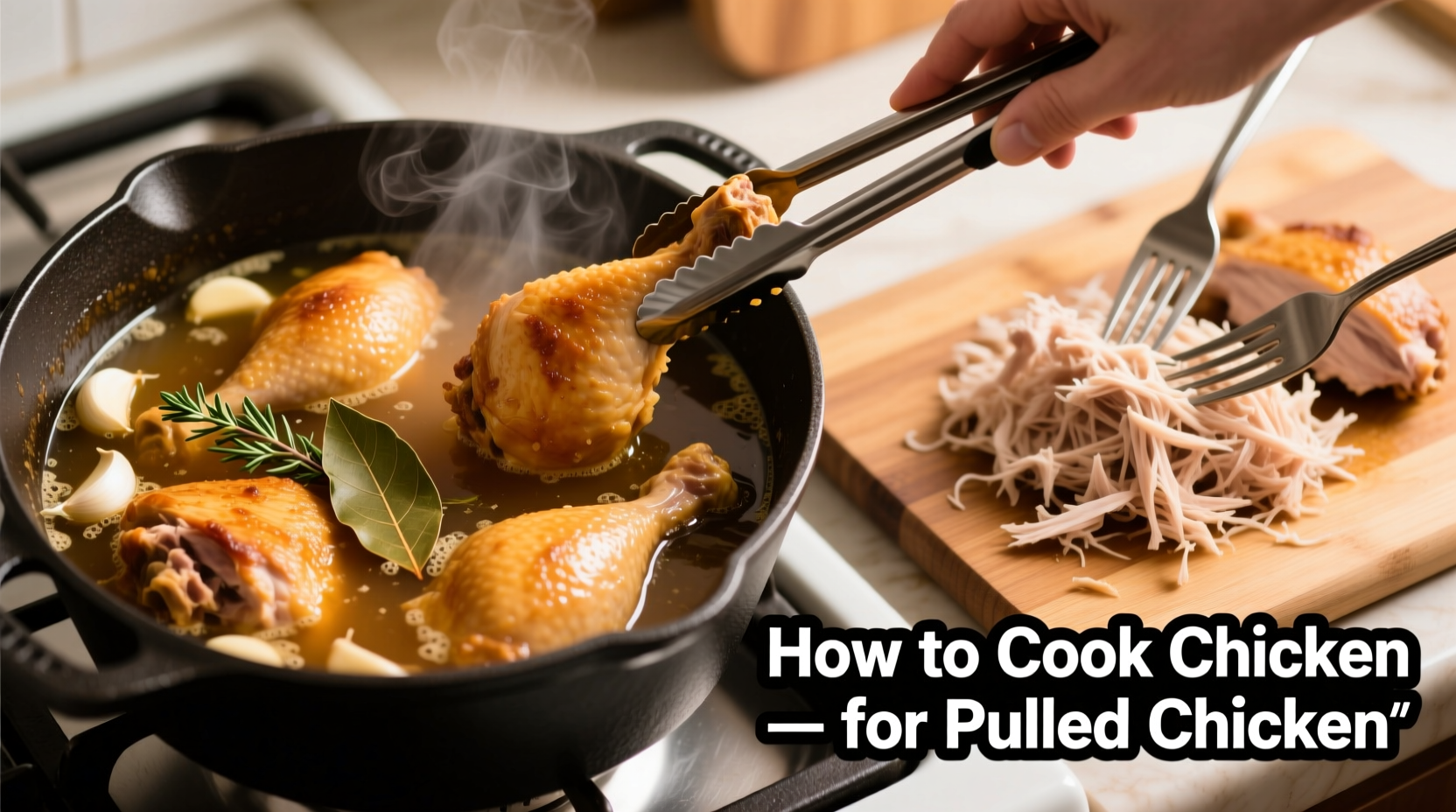Why This Method Beats Boiling or Baking
Many home cooks make the mistake of boiling chicken breasts for pulled chicken, resulting in dry, stringy meat. The secret lies in understanding collagen transformation. When chicken reaches 160-170°F (71-77°C), connective tissues melt into gelatin—but only with sufficient time. Boiling oversaturates the meat with water, while baking risks uneven cooking. Simmering in flavorful liquid maintains ideal moisture balance.
| Cooking Method | Texture Result | Moisture Retention | Time Required |
|---|---|---|---|
| Boiling | Dry, stringy | Low (waterlogged exterior) | 30-45 minutes |
| Baking | Unevenly cooked | Moderate (dries at edges) | 45-60 minutes |
| Simmering in Broth | Tender, pull-apart | High (gelatin-rich) | 2-3 hours |
Your Step-by-Step Cooking Process
Prep: Selecting and Preparing Chicken
Start with 2 lbs boneless, skinless chicken thighs—they contain 50% more fat than breasts, preventing dryness during long cooking. Trim excess fat but leave some for flavor. Pat dry with paper towels, then rub with 1 tsp kosher salt and 1/2 tsp black pepper. Avoid marinades at this stage; excess liquid impedes collagen breakdown.
Cooking: The Low-and-Slow Simmer
Place chicken in a Dutch oven or slow cooker. Cover completely with low-sodium chicken broth (about 4 cups), adding aromatics like 1 sliced onion, 3 garlic cloves, and 2 bay leaves. Bring to a gentle simmer over medium heat, then reduce to low. Maintain a temperature between 160-170°F (71-77°C)—never boiling. Cook uncovered for 2-3 hours until fork-tender. Crucially, verify internal temperature reaches 165°F (74°C) using a meat thermometer per USDA food safety guidelines.

Shredding: Maximizing Flavor and Texture
Transfer chicken to a large bowl, reserving 1 cup broth. Let rest 5 minutes—this allows juices to redistribute. Shred using two forks, working against the grain. For efficiency, use a hand mixer on low speed for 10-15 seconds (but avoid overmixing). Immediately return shredded meat to reserved broth for 5 minutes; this critical step lets fibers absorb liquid, preventing dryness. Toss with your preferred sauce only after this resting period.
Avoiding Common Pitfalls
Many recipes fail by skipping the resting phase or using breasts instead of thighs. Chicken breasts lose moisture rapidly above 165°F, while thighs remain juicy up to 180°F. If short on time, an Instant Pot reduces cooking to 25 minutes at high pressure—but always allow 15 minutes natural release to prevent toughness. Never force-cook at high temperatures; collagen requires time, not heat, to transform.
Storage and Reheating Guidelines
Store cooled pulled chicken in airtight containers with some broth. Per USDA Food Safety and Inspection Service recommendations, it keeps refrigerated for 3-4 days or frozen for 4 months. When reheating, always use broth or sauce—never water—to maintain texture. Microwave in 30-second intervals with 2 tbsp liquid, stirring gently between intervals. Avoid boiling during reheating, which causes rubberiness.
Flavor Variations for Any Cuisine
Customize your pulled chicken by adding regional spices during the simmering phase: For Carolina-style, add 1/4 cup apple cider vinegar and 1 tsp smoked paprika. For Mexican-inspired, include 2 chipotle peppers in adobo. Asian variations shine with 3 tbsp hoisin and 1 tbsp ginger. Remember: Acidic ingredients like vinegar should be added after cooking to prevent protein tightening.











 浙公网安备
33010002000092号
浙公网安备
33010002000092号 浙B2-20120091-4
浙B2-20120091-4